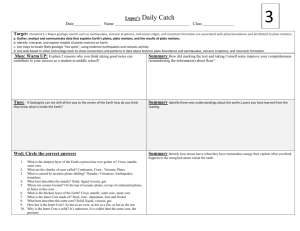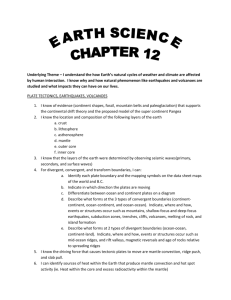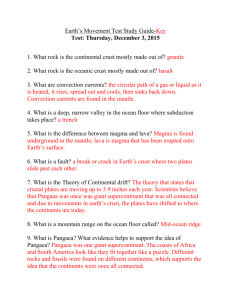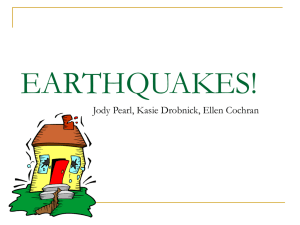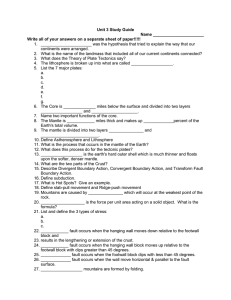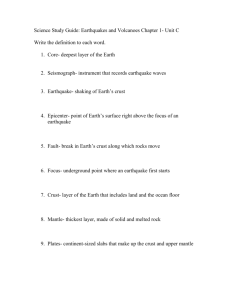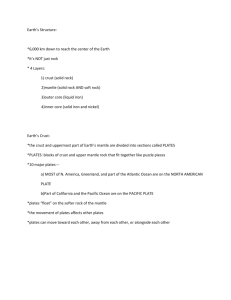Reflexes and the Nervous System
advertisement
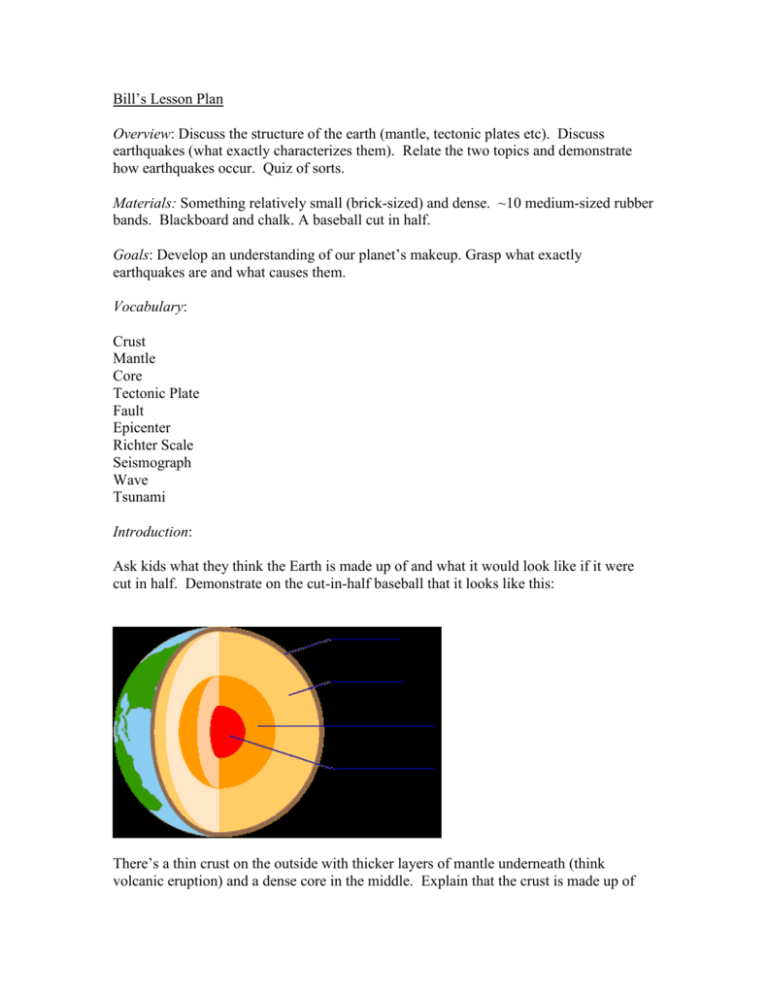
Bill’s Lesson Plan Overview: Discuss the structure of the earth (mantle, tectonic plates etc). Discuss earthquakes (what exactly characterizes them). Relate the two topics and demonstrate how earthquakes occur. Quiz of sorts. Materials: Something relatively small (brick-sized) and dense. ~10 medium-sized rubber bands. Blackboard and chalk. A baseball cut in half. Goals: Develop an understanding of our planet’s makeup. Grasp what exactly earthquakes are and what causes them. Vocabulary: Crust Mantle Core Tectonic Plate Fault Epicenter Richter Scale Seismograph Wave Tsunami Introduction: Ask kids what they think the Earth is made up of and what it would look like if it were cut in half. Demonstrate on the cut-in-half baseball that it looks like this: There’s a thin crust on the outside with thicker layers of mantle underneath (think volcanic eruption) and a dense core in the middle. Explain that the crust is made up of several tectonic plates that are linked together and move on top of the liquidy mantle. Explain that when two plates bump together you get something like: Show what this actually looks like by placing the heavy object on the ground with a long chain of rubber bands attached to it. Have a child slowly pull on the rubber bands (at arms length on the floor to avoid eye injuries etc). After increasing the tension (slowly!!) in smaller 3 cm intervals or so, notice there is very little, if any movement of the block. However, after a certain point, the block jumps a foot or so toward the child (again it should be heavy and blunt enough so that it won’t dangerously fling at the child). Discussion: Explain how that sudden jump represents and earthquake and that just as we heard a sound wave and may have felt a little shudder in the ground when the block landed, different waves are produced which ripple out from the site of the block’s landing spot (epicenter). * Further demonstrate the concept that waves can be transmitted to nearby objects by lining the children up and having them form a human wave (relate that to the two types of earthquake waves - P and S)* Wrap-up: Talk about the Richter Scale and some major past earthquakes, specifically the San Francisco and the Boston Earthquakes. Do some true/false questions about earthquakes such as: Which states have the most earthquakes per year: California and Nevada. Why? San Andreas fault etc.

